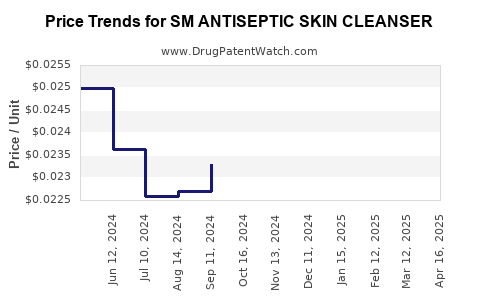Drug Price Trends for SM ANTISEPTIC SKIN CLEANSER
✉ Email this page to a colleague

Average Pharmacy Cost for SM ANTISEPTIC SKIN CLEANSER
| Drug Name | NDC | Price/Unit ($) | Unit | Date |
|---|---|---|---|---|
| SM ANTISEPTIC SKIN CLEANSER 4% | 49348-0115-37 | 0.02175 | ML | 2024-11-20 |
| SM ANTISEPTIC SKIN CLEANSER 4% | 49348-0115-37 | 0.02326 | ML | 2024-10-23 |
| SM ANTISEPTIC SKIN CLEANSER 4% | 49348-0115-37 | 0.02330 | ML | 2024-09-18 |
| >Drug Name | >NDC | >Price/Unit ($) | >Unit | >Date |


